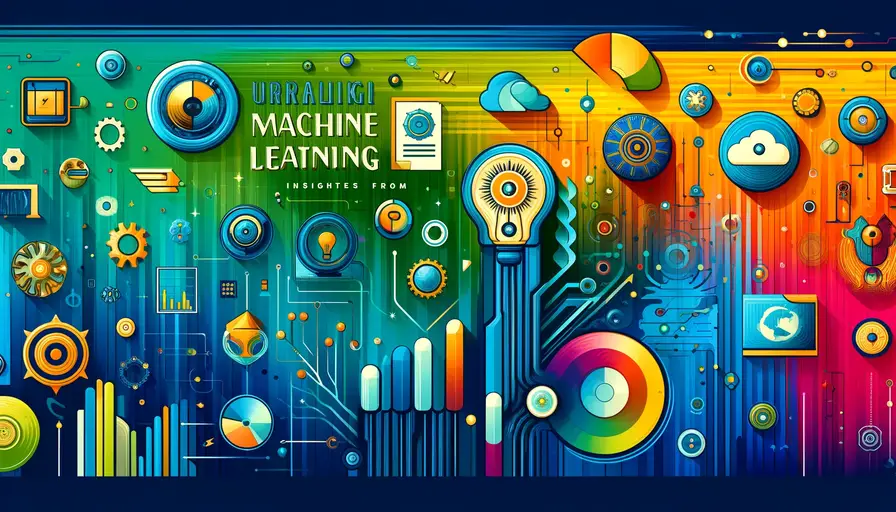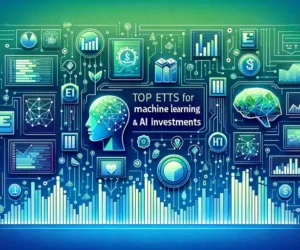
Unraveling Machine Learning: Insights from Scholars

- Exploring the Evolution of Machine Learning
- Insights from Leading Machine Learning Scholars
- Geoffrey Hinton's Contributions to Neural Networks
- Yann LeCun's Innovations in Computer Vision
- Example: Implementing a Convolutional Neural Network with Keras in Python
- Yoshua Bengio's Advances in Natural Language Processing
- Example: Implementing an LSTM Network for Text Generation with Keras in Python
- Current Trends and Future Directions
Exploring the Evolution of Machine Learning
Historical Milestones in Machine Learning
The evolution of machine learning (ML) has been marked by several key milestones that have significantly advanced the field. The concept of machine learning dates back to the mid-20th century when Alan Turing introduced the idea of a machine that could learn from experience. This idea laid the foundation for the development of machine learning algorithms and techniques.
In the 1950s, Arthur Samuel created one of the first machine learning programs, a checkers-playing program that improved its performance through self-play. This early demonstration of machine learning's potential showcased the power of algorithms to learn and adapt over time. Samuel's work paved the way for future advancements in the field.
The 1980s and 1990s saw the rise of neural networks, a class of algorithms inspired by the structure and function of the human brain. The development of backpropagation, an algorithm for training neural networks, was a significant breakthrough. Researchers such as Geoffrey Hinton and Yann LeCun made substantial contributions to neural network research, leading to the resurgence of interest in these models.
Breakthroughs in Deep Learning
Deep learning, a subset of machine learning, has been at the forefront of recent advancements in artificial intelligence (AI). Deep learning models, particularly deep neural networks, have demonstrated remarkable capabilities in tasks such as image and speech recognition, natural language processing, and game playing. These breakthroughs have been driven by the availability of large datasets and powerful computational resources.
Questions to Ask When Initiating a Machine Learning ProjectOne of the most notable breakthroughs in deep learning was the development of convolutional neural networks (CNNs) by Yann LeCun. CNNs have become the standard for image recognition tasks, achieving state-of-the-art performance on benchmarks such as the ImageNet dataset. The success of CNNs in image processing has inspired their application in various other domains, including medical imaging and autonomous driving.
Another significant advancement in deep learning is the development of generative adversarial networks (GANs) by Ian Goodfellow. GANs consist of two neural networks—a generator and a discriminator—that compete against each other to produce realistic data. GANs have been used to generate high-quality images, create realistic deepfakes, and enhance image resolution. This innovative approach has opened up new possibilities for creative applications of AI.
Example: Implementing a Simple Neural Network with Keras in Python
import numpy as np
from keras.models import Sequential
from keras.layers import Dense
# Generate dummy data
X = np.random.random((1000, 20))
y = np.random.randint(2, size=(1000, 1))
# Create a simple neural network model
model = Sequential()
model.add(Dense(64, input_dim=20, activation='relu'))
model.add(Dense(1, activation='sigmoid'))
# Compile the model
model.compile(optimizer='adam', loss='binary_crossentropy', metrics=['accuracy'])
# Train the model
model.fit(X, y, epochs=50, batch_size=32, validation_split=0.2)In this example, Keras is used to implement a simple neural network for a binary classification task. The code demonstrates how to create, compile, and train a neural network model using Python, showcasing the practical application of deep learning techniques.
Insights from Leading Machine Learning Scholars
Geoffrey Hinton's Contributions to Neural Networks
Geoffrey Hinton, often referred to as the "Godfather of Deep Learning," has made groundbreaking contributions to the field of neural networks. His research on backpropagation, a method for training neural networks, has been fundamental in advancing deep learning. Hinton's work on restricted Boltzmann machines and deep belief networks has also significantly influenced the development of unsupervised learning techniques.
Master Machine Learning with RHinton's contributions extend beyond theoretical research. He has been instrumental in applying neural networks to practical problems. For example, his collaboration with Google led to the development of the "Google Brain" project, which used deep learning to improve speech recognition and image classification. Hinton's work has laid the groundwork for many of the advancements in AI we see today.
In addition to his technical contributions, Hinton has been a mentor to many prominent AI researchers, including Yann LeCun and Yoshua Bengio. His influence on the field of machine learning is profound, and his insights continue to shape the direction of AI research. Hinton's dedication to advancing the capabilities of neural networks has solidified his legacy as a pioneering figure in AI.
Yann LeCun's Innovations in Computer Vision
Yann LeCun, a pioneer in computer vision, is renowned for his development of convolutional neural networks (CNNs). His work on CNNs has revolutionized the field of image recognition, enabling machines to achieve human-like accuracy in visual tasks. LeCun's research has been instrumental in the success of deep learning applications in computer vision, from facial recognition to autonomous vehicles.
LeCun's contributions are not limited to CNNs. He has also made significant advances in self-supervised learning, a technique that enables models to learn from unlabeled data. This approach has the potential to overcome the limitations of supervised learning, which requires large amounts of labeled data. LeCun's work on self-supervised learning is paving the way for more efficient and scalable AI systems.
Stay Informed on Latest Machine Learning Dataset NewsIn his role as the Chief AI Scientist at Facebook, LeCun continues to drive innovation in AI research. His leadership and vision have inspired a new generation of researchers to explore the frontiers of machine learning. LeCun's insights into the potential of deep learning and his commitment to advancing AI technology have made him a leading figure in the field.
Example: Implementing a Convolutional Neural Network with Keras in Python
import numpy as np
from keras.datasets import cifar10
from keras.models import Sequential
from keras.layers import Conv2D, MaxPooling2D, Flatten, Dense
from keras.utils import to_categorical
# Load and preprocess CIFAR-10 dataset
(X_train, y_train), (X_test, y_test) = cifar10.load_data()
X_train, X_test = X_train / 255.0, X_test / 255.0
y_train, y_test = to_categorical(y_train), to_categorical(y_test)
# Create a CNN model
model = Sequential([
Conv2D(32, (3, 3), activation='relu', input_shape=(32, 32, 3)),
MaxPooling2D((2, 2)),
Conv2D(64, (3, 3), activation='relu'),
MaxPooling2D((2, 2)),
Flatten(),
Dense(64, activation='relu'),
Dense(10, activation='softmax')
])
# Compile the model
model.compile(optimizer='adam', loss='categorical_crossentropy', metrics=['accuracy'])
# Train the model
model.fit(X_train, y_train, epochs=10, batch_size=64, validation_split=0.2)In this example, a Convolutional Neural Network (CNN) is implemented using Keras to classify images from the CIFAR-10 dataset. The code demonstrates how to build, compile, and train a CNN model, reflecting Yann LeCun's contributions to computer vision.
Yoshua Bengio's Advances in Natural Language Processing
Yoshua Bengio, a prominent figure in AI research, has made significant advances in natural language processing (NLP) and deep learning. His work on recurrent neural networks (RNNs) and long short-term memory (LSTM) networks has greatly enhanced the ability of machines to process and understand sequential data, such as text and speech. Bengio's research has been pivotal in advancing the state of NLP.
Bengio's contributions to AI extend to the development of generative models, particularly in the context of language generation. His work on variational autoencoders (VAEs) has provided new ways to generate realistic data, including text. These advancements have been instrumental in the development of sophisticated language models that can generate human-like text, translating to improvements in machine translation, text summarization, and chatbots.
Why Python is the Preferred Language for Machine LearningAs a co-recipient of the Turing Award, often referred to as the "Nobel Prize of Computing," Bengio's impact on the field of machine learning is widely recognized. His ongoing research continues to push the boundaries of what AI can achieve, particularly in the realm of NLP. Bengio's dedication to advancing AI for the benefit of society underscores his significant contributions to the field.
Example: Implementing an LSTM Network for Text Generation with Keras in Python
import numpy as np
from keras.models import Sequential
from keras.layers import LSTM, Dense
from keras.preprocessing.text import Tokenizer
from keras.preprocessing.sequence import pad_sequences
# Sample text data
text = "Machine learning is a field of artificial intelligence that uses statistical techniques to give computer systems the ability to learn from data."
# Tokenize and prepare sequences
tokenizer = Tokenizer()
tokenizer.fit_on_texts([text])
sequence_data = tokenizer.texts_to_sequences([text])[0]
# Prepare input and output pairs
X, y = [], []
seq_length = 5
for i in range(seq_length, len(sequence_data)):
X.append(sequence_data[i-seq_length:i])
y.append(sequence_data[i])
X, y = np.array(X), np.array(y)
# Create LSTM model
model = Sequential()
model.add(LSTM(50, input_shape=(seq_length, 1)))
model.add(Dense(len(tokenizer.word_index) + 1, activation='softmax'))
# Compile the model
model.compile(optimizer='adam', loss='sparse_categorical_crossentropy', metrics=['accuracy'])
# Reshape data and train the model
X = X.reshape((X.shape[0], X.shape[1], 1))
model.fit(X, y, epochs=200, batch_size=32)In this example, an LSTM network is implemented using Keras for text generation. The code demonstrates how to preprocess text data, build, compile, and train an LSTM model, reflecting Yoshua Bengio's contributions to natural language processing.
Current Trends and Future Directions
Ethics and Fairness in Machine Learning
As machine learning models become increasingly integrated into various aspects of society, ensuring their ethical use and fairness is paramount. Issues such as bias, privacy, and transparency must be addressed to build trustworthy AI systems. Scholars and researchers are actively exploring methods to detect and mitigate bias in machine learning models, ensuring that these systems do not perpetuate existing inequalities.
One approach to promoting fairness is through the use of fairness-aware algorithms. These algorithms are designed to ensure that the model's predictions are not biased against any particular group. Techniques such as adversarial debiasing and fairness constraints are employed to achieve this goal. By incorporating fairness considerations into the model development process, researchers aim to create more equitable AI systems.
Strategies for Handling Outliers in Machine Learnin RegressionTransparency in machine learning models is also crucial for building trust. Explainable AI (XAI) techniques, such as model interpretability tools and visualizations, help stakeholders understand how the model makes decisions. This transparency is essential for identifying potential biases and ensuring that the model's predictions are based on sound reasoning. As the field of machine learning continues to evolve, ethical considerations will remain a central focus.
Reinforcement Learning and Autonomous Systems
Reinforcement learning (RL) is a rapidly advancing area of machine learning that focuses on training agents to make decisions by interacting with their environment. RL has shown remarkable success in complex tasks such as game playing, robotics, and autonomous systems. The development of algorithms such as Deep Q-Networks (DQNs) and Proximal Policy Optimization (PPO) has significantly advanced the capabilities of RL agents.
One of the most notable achievements in RL is the success of AlphaGo, developed by DeepMind. AlphaGo, which combines deep learning with reinforcement learning, defeated the world champion Go player, demonstrating the potential of RL in mastering complex strategic games. This achievement has spurred interest in applying RL to other domains, including autonomous driving, healthcare, and finance.
As RL continues to evolve, researchers are exploring ways to improve the scalability and efficiency of RL algorithms. Techniques such as multi-agent reinforcement learning and hierarchical reinforcement learning aim to tackle more complex and dynamic environments. The future of RL holds promise for developing autonomous systems that can operate effectively in real-world scenarios.
Is Machine Learning Difficult to Learn?Example: Implementing a Simple Reinforcement Learning Agent with Gym in Python
import gym
import numpy as np
import random
# Create environment
env = gym.make('CartPole-v1')
# Initialize Q-table
state_size = env.observation_space.shape[0]
action_size = env.action_space.n
q_table = np.zeros((state_size, action_size))
# Hyperparameters
learning_rate = 0.1
discount_factor = 0.99
epsilon = 1.0
max_epsilon = 1.0
min_epsilon = 0.01
decay_rate = 0.01
# Training parameters
episodes = 1000
max_steps = 100
# Q-learning algorithm
for episode in range(episodes):
state = env.reset()
total_rewards = 0
for step in range(max_steps):
exp_exp_tradeoff = random.uniform(0, 1)
if exp_exp_tradeoff > epsilon:
action = np.argmax(q_table[state, :])
else:
action = env.action_space.sample()
new_state, reward, done, _ = env.step(action)
q_table[state, action] = q_table[state, action] + learning_rate * (reward + discount_factor * np.max(q_table[new_state, :]) - q_table[state, action])
total_rewards += reward
if done:
break
state = new_state
epsilon = min_epsilon + (max_epsilon - min_epsilon) * np.exp(-decay_rate * episode)
env.close()In this example, a simple reinforcement learning agent is implemented using the Gym library in Python. The agent is trained to balance a pole on a cart using the Q-learning algorithm, demonstrating the practical application of reinforcement learning techniques.
Federated Learning and Privacy-Preserving AI
Federated learning is an emerging approach that aims to improve privacy and security in machine learning. In federated learning, models are trained across multiple decentralized devices or servers holding local data samples, without exchanging them. This approach ensures that sensitive data remains on local devices, reducing the risk of data breaches and enhancing privacy.
By leveraging federated learning, organizations can train machine learning models on data from diverse sources without compromising privacy. For example, in healthcare, federated learning can enable collaborative research and model development across different institutions while preserving patient confidentiality. This approach has the potential to accelerate medical advancements and improve patient outcomes.
Privacy-preserving AI techniques, such as differential privacy and homomorphic encryption, complement federated learning by providing additional layers of security. Differential privacy ensures that the output of a machine learning model does not reveal sensitive information about individual data points. Homomorphic encryption allows computations to be performed on encrypted data, ensuring data privacy throughout the entire process.
As privacy concerns continue to grow, federated learning and privacy-preserving AI will play a crucial role in the development of secure and trustworthy machine learning systems. These approaches enable the ethical use of data while maintaining high standards of privacy and security.
Machine learning has come a long way since its inception, driven by the contributions of pioneering scholars and ongoing advancements in the field. By exploring historical milestones, understanding the insights of leading researchers, and staying abreast of current trends, we can appreciate the profound impact of machine learning on society. As we continue to unravel the complexities of machine learning, it is essential to prioritize ethical considerations, embrace new technologies, and leverage AI for the greater good.
If you want to read more articles similar to Unraveling Machine Learning: Insights from Scholars, you can visit the Education category.



You Must Read